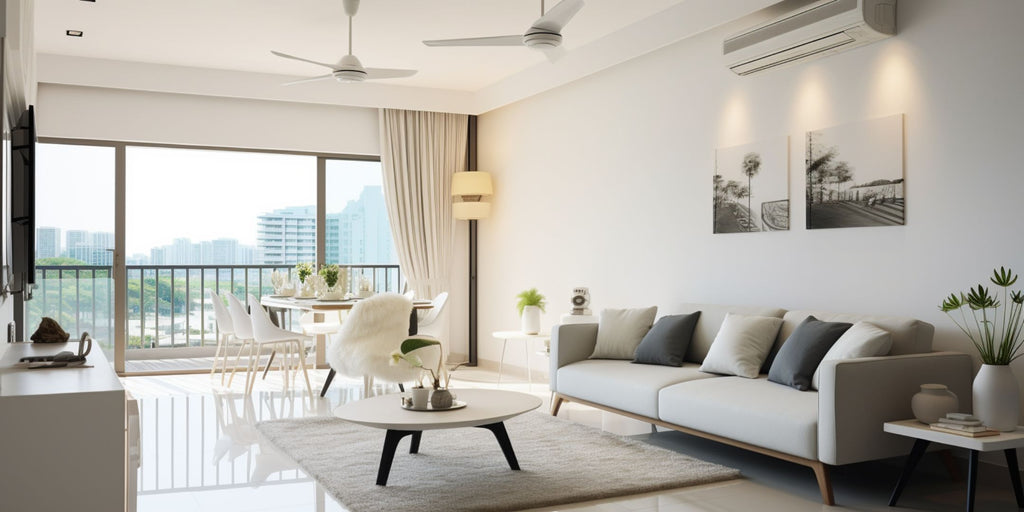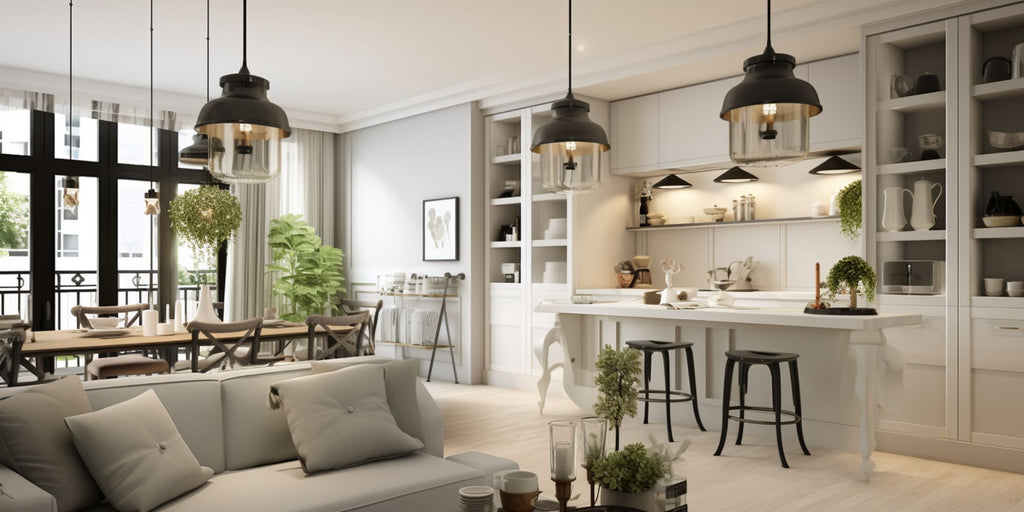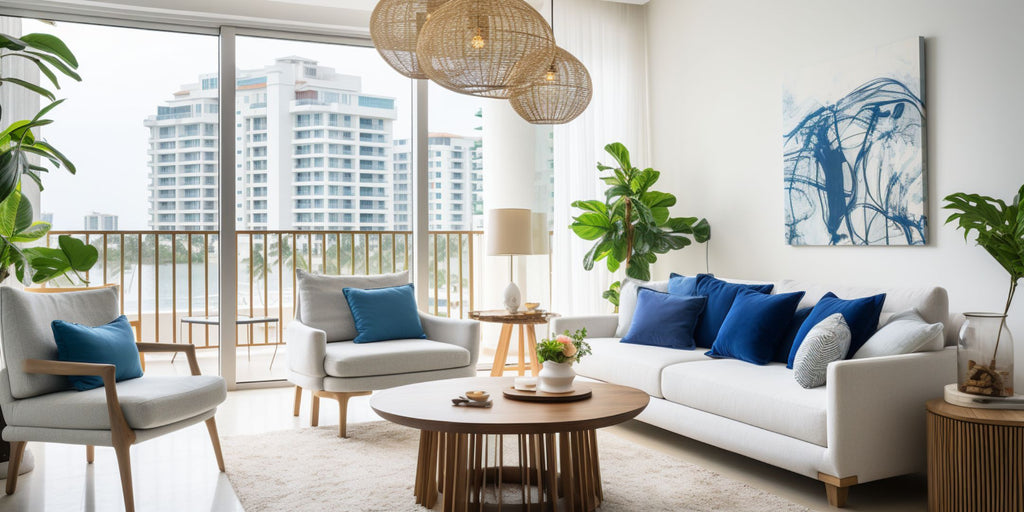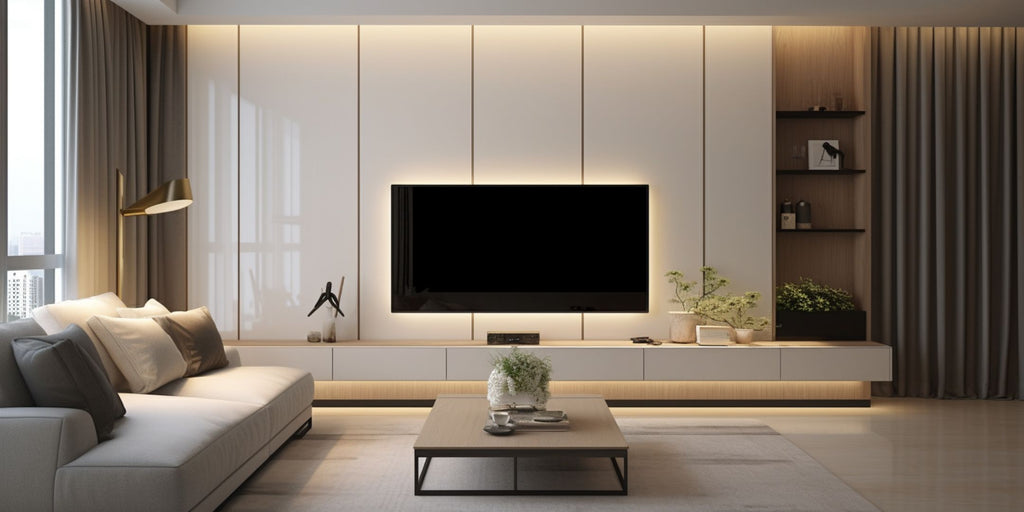Before diving into mixing styles, it's essential to have a basic understanding of interior design ideas and their characteristics. Two important decorating concepts to consider when mixing styles are the 80/20 rule and the law of 3.
The 80/20 Rule in Decorating
The 80/20 rule, known as the Pareto principle, can be applied to interior design. In decorating, it suggests that 80% of your space should be dedicated to a primary design style, while the remaining 20% can incorporate elements from other styles. This helps to create a cohesive and well-balanced room.
The Law of 3 in Decorating
The law of 3 is a decorating principle that suggests using odd numbers, specifically three when arranging objects or choosing design elements. This creates visual interest and harmony within a space. For instance, you might group three decorative items together on a shelf or use three different textures within your living room.
Popular Interior Design Ideas and Styles

To mix styles effectively, being familiar with some popular interior design styles is helpful. Here are five common styles to consider:
Mid-Century Modern
Mid-century modern is a style that originated in the mid-20th century, featuring clean lines, organic shapes, and minimal ornamentation. This style often incorporates natural materials such as wood and leather.
French Country
French Country interior design ideas is inspired by the rustic charm of the French countryside, focusing on warm colours, natural materials, and a sense of comfort. This style often includes distressed wood, wrought iron, and a mix of patterns such as toile and gingham.
Traditional
The traditional design is inspired by European and American classic styles, featuring elegant furnishings, rich colours, and timeless patterns. This style often includes elaborate woodwork, plush fabrics, and sophisticated details.
Coastal
The coastal design draws inspiration from the seaside, focusing on light and airy colours, natural materials, and nautical accents. This style often includes soft, neutral tones, weathered wood, and beach-inspired motifs.
Transitional
The transitional interior design ideas blends traditional and contemporary styles, creating a timeless and elegant look. This style often features a neutral colour palette, simple lines, and a mix of classic and modern furniture pieces.
Mixing Styles: Key Principles

When deciding on how to decorate your living room, it's important to keep the following guidelines in mind:
Maintain Balance
Creating balance within your living room is essential when mixing styles. Make sure to evenly distribute different design elements throughout the space, preventing any one style from dominating the room.
Choose a Dominant Interior Style
As mentioned earlier, the 80/20 rule suggests that one style should dominate your space. Identify your primary design style and use this as a foundation to build upon, incorporating elements from other styles to add visual interest and personality.
Create a Focal Point
Establish a focal point within your living room, such as a fireplace or a statement piece of art. This will help anchor the room and provide a reference point for the styles you are incorporating.
Incorporate Accent Pieces
Accent pieces can tie the various design styles together, creating a cohesive look. Consider using accent chairs, throw pillows, or artwork incorporating elements from different styles.
Combining Different Furniture Styles

Mixing furniture styles in your living room can create a dynamic and visually interesting space. Here are some tips for successfully combining different furniture styles:
Merging Traditional and Modern
Blending traditional and modern furniture can create a sophisticated and timeless look. Consider pairing a classic Chesterfield sofa with a sleek glass coffee table or a traditional wingback chair with a minimalist side table.
Mixing Textures and Materials
Incorporating a variety of textures and materials can add depth and visual interest to your living room. Mix metal, wood, and glass furniture pieces, and experiment with different upholstery fabrics, such as velvet, leather, or linen.
Creating Contrast
Contrast is essential when mixing furniture styles, as it helps to create a balanced and visually appealing space. Consider combining dark and light-coloured furniture, or pairing bold, statement pieces with more understated items.
Embracing Eclectic Design
The eclectic design combines different styles, textures, and colours harmoniously and cohesively. Feel free to mix and match furniture pieces from different design styles as long as the overall look remains balanced and visually appealing.
Practical Tips for Mixing Styles in Your Living Room

To successfully mix styles in your living room interior design, keep these practical tips in mind:
Use Colour to Unify the Space
Colour can be a powerful tool for unifying different design styles. Please choose a colour palette that works well with your chosen styles, and use it throughout the space to create a cohesive look.
Consider Scale and Proportion
When mixing furniture styles, it's important to consider scale and proportion. Ensure that your furniture pieces are appropriately sized for your space and complement one another in size and shape.
Don't Be Afraid to Experiment
Finally, experiment with different styles, colours, and textures. The key to successful interior design is finding the right balance and creating a space that feels uniquely yours.
Unleash Your Interior Design Ideas Through Mixed Furniture Styles
Mixing styles with furniture in your living room interior design is an exciting and creative way to personalise your space. Understanding popular design styles, adhering to key principles, and implementing practical tips can create a harmonious and visually appealing living room that reflects your unique taste and personality.
Happy decorating!








